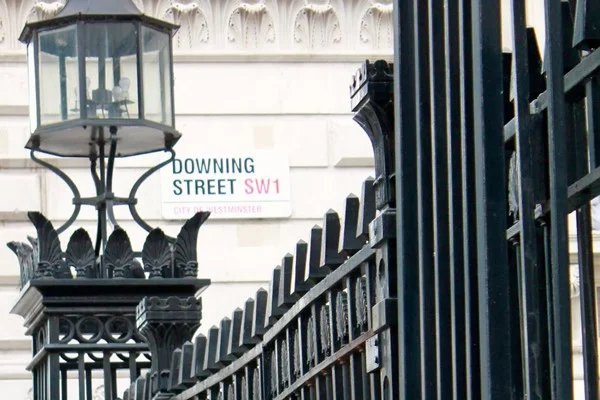Rural Property Prices up a Staggering 30% Year on Year
Nowhere is the pandemic price boom more evident than in some of the UK’s most picturesque and desirable rural locations. A recent BBC expose examined the effects of the pandemic on the Yorkshire Dales housing market, where desirable properties continue to attract dozens of offers within days.
Demand for such homes continues to outstrip supply by a significant margin, making it difficult for those residing within the region to relocate locally.
“We enjoy country life. We already live in one of the villages and would like to stay, but there is a lot of demand for village properties, and we are increasingly finding ourselves priced out,” Jonathan and Sarah Ratcliffe told the BBC, explaining that they would like to purchase a bigger home but simply cannot afford to do so.
Official Land Registry figures indicate that average property prices in Richmondshire are up almost 30% since the same time last year. This represents the most explosive growth anywhere in the UK, followed by other rural locations like the Cotswolds and North Norfolk, both of which have seen gains in excess of 20%.
Remarkable figures considering the turbulent events of the past 18 months, but a clear indication of shifting priorities among movers and first-time buyers.
All eyes on the countryside
The COVID-19 pandemic triggered a major rethink among prospective homebuyers with regard to where they want to live and how they see their ideal lifestyle. More people are working from home than ever before, meaning millions no longer need to live in proximity to their previous workplace.
Combined with the temporary stamp duty holiday and the lowest mortgage rates in recorded history, a frenzy of buyer interest was directed at desirable rural properties throughout the first half of 2021.
Consequently, house prices in rural regions skyrocketed. According to the latest figures from the Royal Institution of Chartered Surveyors (RICS), available inventory across most of the country’s most popular areas is close to or at a record low.
“Anything we listed [from last summer] flew out of the door. Richmondshire property has always been where we don’t get too high on the highs and low on the lows. It was a massive change from what we had seen previously. This is unprecedented,” commented Irving’s Property Estate and Lettings Agents’ director, Margi Irving.
“We have definitely got a supply-and-demand issue. We have gone weeks, just like other agents, listing just one or two. People are reluctant to put their house on the market because they have nowhere to buy,” she added, explaining that the 100+ homes she had on her books a year ago had declined to little over 30.
“We were Britain’s best-kept secret, evidently. Just recently, people have realised you get perfect value for money. It is a beautiful town. It has lovely villages surrounding it. The services and schools are very, very good.”
Mortgage Processing Times Pushed to 16 weeks
As demand for desirable properties continues to outstrip supply in all regions of the UK, mortgage processing times have been increasing for several months. According to the latest figures from Property Mark, a leading UK estate agency body, the average property transaction completion time has now reached between 13 and 16 weeks.
Commenting on the growing bottleneck, the company’s CEO, Nathan Emerson, said that current mortgage processing times were exponentially longer than the typical 6 to 8-week norm. He also attributed much of the backlog to the rush that preceded the partial withdrawal of the stamp duty holiday, which saw lenders and brokers inundated with hurried mortgage applications.
Reports suggest that many prospective buyers who wanted to take advantage of the temporary stamp duty suspension were unable to do so due to slow mortgage processing times. Even those who believed they were getting their applications underway at an early juncture found there was insufficient time to complete the process before the offer was withdrawn.
Bridging loans proves popular to prevent delays
The more difficult it becomes to arrange a mortgage quickly and efficiently on the High Street, the more attention the UK’s specialist lending sector is attracting. Bridging finance in particular is proving a popular option among movers, looking to ‘bridge’ the gap between the purchase of their new property and the sale of their current home.
With bridging finance, it is possible to reduce the lengthy processing time of a typical mortgage to less than two weeks. In some instances, the funds provided by way of a bridging loan can be accessed within a matter of days. For time-critical property purchases and investments, bridging loans can be uniquely flexible and accessible.
Put into context, a homeowner looking to relocate may find their dream home at an unbeatable price in the perfect location. However, their current home has only recently been put on the market, and a buyer is yet to be found.
A bridging loan secured against their current home could provide them with the funds they need to pay for their new home outright. After which, the bridging loan is repaid several weeks or months later, just as soon as their previous property is sold.
Bridging finance attaches a monthly rate of interest, often lower than 0.5%, along with minimal borrowing costs where the balance is repaid promptly.
Assessing suitability for bridging finance
Prior to applying for a bridging loan for any purpose, it is advisable to speak to an independent broker to discuss all the alternative options available. Bridging finance is offered exclusively with short-term applications in mind and should never be seen as a viable alternative to a conventional long-term mortgage.
As a way to bypass mortgage processing times and ensure your dream home does not slip through your fingers, bridging finance can be an unbeatable facility.
For more information on bridging loans or to discuss bridging finance qualification criteria in more detail, contact a member of the team at UK Property Finance today.
Is it Possible to Cover Your University Costs as a Landlord?
It may appear a bizarre concept on the surface, but student BTL mortgages do exist, the idea being that with a ‘student mortgage’ you purchase a property with no down payment and earn money by renting it out to your friends.
Only because it is technically possible does not necessarily make it an appropriate pathway for most students; covering living costs is a real concern for most university attendees, but purchasing a property to rent out is not without its complexities.
An interesting proposition
Several small lenders have put together a range of innovative products aimed exclusively at students. Examples of this include Bath, Loughborough, and Vernon building societies, all of which provide students with the opportunity to buy a home with no deposit required.
Those taking advantage of the products will subsequently be able to rent space in their properties to other students in order to cover the mortgage payments.
‘Mortgages and students are not usually two things that you’d associate as a package,’ commented L&C Mortgages associate director, David Hollingworth.
‘Students are unlikely to have much if any income and therefore will always struggle to meet the primary requirement of a mortgage lender in demonstrating affordability to take on a mortgage,’
‘They also aren’t likely to have a deposit to use a buy-to-let mortgage, let alone the minimum income or homeownership that many lenders would expect,’
‘These issues have seen some lenders offer students a chance to buy a property rather than rent, but with the help of their parents.’
How the scheme works
Eligible applicants are offered a loan to purchase a property with an LTV of 100%, meaning no deposit is required. A guarantor is required to co-sign the mortgage agreement along with the student, typically a family member.
The funds can subsequently be used to purchase a property and rent out spare rooms to friends or other students. From there, monthly payments are collected to both cover the mortgage repayments and make money to cover the owner’s living costs.
‘’The mortgage amount is based on the rental income the property could yield from letting out the spare rooms.
‘The guarantor will be on the mortgage deeds but not on the property deeds, and their income can be used to help the application,’ explains Chris Sykes, associate director and mortgage consultant at Private Finance.
‘If no deposit is available, then the guarantor can either put money on account with the lender to the value of 20 per cent of the mortgage or they can use their own home as security for the loan.’
An attractive initiative, but must be carefully considered from a longer-term perspective. The ongoing costs of homeownership are at an all-time high in the UK, as are those of running a BTL business of any kind.
Anyone interested in becoming a student landlord is therefore advised to seek independent broker support in order to establish their suitability and determine whether it is something they can realistically afford.
Exactly How Much Did Boris Johnson Borrow to Refurbish His Downing Street Flat?
It is no secret that Boris Johnson chose a rather questionable time to refurbish his luxury London flat. While most people across the UK were struggling to make ends meet, the Prime Minister raised eyebrows by spending a small fortune on predominantly unnecessary adornments.
The exact amount he borrowed to pay for the refurbishments has been revealed: an eye-watering £52,000. Having been questioned on where the funds came from, the Conservative Party has now admitted that Boris Johnson “personally settled the costs incurred by Lord Brownlow”, a party donor who helped finance the work.
Having previously described what was once the home of Theresa May as a “John Lewis furniture nightmare”, his wife, Carrie, made no secret of her disdain for its décor. Disdain was so severe that the pair thought it sensible to hire top designer Lulu Lytle to oversee its overhaul, which, according to insiders, included £840-a-roll golden wallpaper.
Not that such a high price guarantees quality; as rumour has it, the elaborate wall covering has peeled away from its surface.
A painful price paid by the taxpayer
Documents have now confirmed that the loan repaid by Boris Johnson came alongside an additional £28,600 paid by you, the UK taxpayer. Tasks including painting and sanding his floorboards were funded straight from the pockets of the British public, leaving sour tastes in the mouths of many.
Published financial accounts from the Conservative Party indicate a “bridging loan” of £52,802 repaid by Johnson out of party funds last summer. Lord Ludlow would then go on to cover these costs, but no declaration was made to the Electronic Commission.
Even though the law clearly states that all donations and loans to political parties of five figures or more must be reported,
“All reportable donations to the Conservative Party are correctly declared to the Electoral Commission, published by them, and comply fully with the law. Gifts and benefits received in a ministerial capacity are, and will continue to be, declared in government transparency returns,” was the response from the conservative Party, clearly refusing to acknowledge any wrongdoing.
Questions remain as to how the refurbishment was originally funded and how much the project cost in total. Despite the declaration from the Conservative Party, numerous reports suggest that he may have spent more than £200,000 breaking into his new flat.
Again, all at a time when the rest of the country was struggling to make ends meet and facing a terrifyingly uncertain financial future.
The 1% Mortgage is Back, but what does it Really Mean?
Competition among lenders on the High Street is fuelling an unprecedented and escalating price war; over the course of the last month, several lenders have once again introduced sub-1% two-year fixed mortgage deals for the first time in years.
Today there are at least 10 two-year fixed remortgage deals being advertised at rates of less than 1%, all of which are prompting many to ask the obvious question:
Are 1% mortgage rates for real, or is it all too good to be true?
Why lenders are offering sub-1% mortgage deals
The motivation for offering mortgages with interest rates lower than 1% is fairly straightforward. As things stand right now, lenders are finding themselves with little choice but to go to extremes to get new customers on their books.
Competition between lenders is fierce, meaning many are throwing out the kinds of deals they would never have considered in previous years.
“The sub-1% mortgages to surface have grabbed the spotlight as lenders drop their rates to bring in new business after the market endured an unsettled period due to the pandemic,” explains Rachel Springall, finance expert at Moneyfacts.co.uk.
“Genuinely, a deal with a low rate and high fee may only be suitable for someone with a substantial mortgage who can meet the eligibility criteria. If borrowers were to approach a mortgage broker and assess the deal based on true cost, they may well find they are better off elsewhere on a deal with a slightly higher rate but with a more reasonable fee and incentive package. It really does depend on their circumstances and what they are looking to borrow, so seeking advice is wise.”
“There is much more scope for lenders to cut pricing in the higher loan-to-value sectors, but we have only recently seen product choice grow in this area of the market, after a significant drop due to the pandemic.”
“With this in mind, it may be a few weeks before lenders consider slashing their rates on higher loan-to-value mortgages, and instead they may well just maintain their presence in the market or make minor tweaks for borrowers who have been waiting for deals to return.”
A competitive offer with caveats
The appeal of a sub-1% mortgage deal is undeniable, but it is unlikely that most prospective buyers will be able to qualify for such rates. With the vast majority of lenders offering sub-1% deals, including NatWest, Royal Bank of Scotland, TSB, and Platform, the maximum LTV available is just 60%.
In order to qualify, the applicant would subsequently need to provide a minimum deposit of 40% along with all other initial charges. The offer is therefore unlikely to appeal to most first-time buyers, for whom saving the minimum deposit requirement is often the biggest of all barriers to homeownership.
In the meantime, movers and first-time buyers looking to get the best possible deal are advised to consult with an independent broker rather than approaching any specific lender directly. Some of the most competitive deals on the market are available exclusively in the form of broker-introduced applications and are not available on the High Street.
Buildings Lower Than 18 Metres Now Exempt from Mandatory Fire Safety Checks
The requirement for people purchasing flats in smaller housing blocks to provide safety information to qualify for a mortgage has been scrapped. Government officials have confirmed that no longer will those buying flats in buildings lower than 18 metres need to verify the condition of the external walls and cladding, a safety measure brought in following the Grenfell Tower tragedy.
The change has been welcomed by major lenders, including Barclays, HSBC, and Lloyds, who said that industry guidance updates ensure clarity for lenders. Flat owners and prospective buyers have faced major problems selling and buying homes since 2017 due to concerns regarding the costs associated with the removal of flammable cladding.
72 people lost their lives in the Grenfell Tower tragedy four years ago, attributed primarily to the use of dangerous cladding on the exterior of the building. Subsequent investigations discovered that similar cladding remains in place on thousands of housing blocks across the UK.
Where projects have been undertaken to remove or replace the material, the costs have fallen to the owners of the flats within the building. Many of which have found themselves with negative equity and unable to sell their homes.
Mandatory safety assessments
In order to qualify for a mortgage, applicants looking to purchase a property in a tall building with potentially flammable cladding were required by mortgage lenders to provide a formal assurance of safety. This was provided in the form of a sign-off form, also known as EWS1, which was verified by a safety assessor to indicate that the building was not a high-risk property.
It was only those who owned flats in buildings known to be fitted with flammable external cladding that were required to obtain an EWS1. However, many mortgage lenders began expanding the requirements to a broader and more diverse range of buildings, making it difficult or impossible for thousands of prospective buyers to qualify for a mortgage.
Last week, Housing Secretary Robert Jenrick announced that the government’s guidance would be adjusted to exclude property owners in low-to-medium-rise blocks from this requirement. The statement from the government indicated that the move was prompted by updated advice from fire safety experts, who reached the conclusion that formal fire safety checks were not necessary for such properties.
“In the small number of cases [in purpose-built tower blocks below 18 m] where there are known concerns, these should be addressed primarily through risk management and mitigation,” Mr Jenrick said.
“Fire-risk assessors and lenders should not presume that there is a significant risk to life unless there is evidence to support this.”
“This would ensure that they respond only to the evidence and adopt a far more proportionate and balanced approach.”
He also stated that while he was satisfied with the positive response from most major lenders so far, not all mortgage providers had yet confirmed alterations to their lending policies.
“I hope and expect other lenders to follow suit swiftly,” he said.
Right to Buy vs Remaining a Tenant: Can You Afford to Buy your Home?
The prospect of owning your home is particularly tempting when there is the offer of a huge discount on the table. Introduced in 1980 by Margaret Thatcher, the Right to Buy scheme provides qualifying council house tenants with the opportunity to purchase their properties at a heavily discounted rate.
Depending on how long you have lived in a council house, you could qualify for anything up to £84,200 off its true market value (£112,300 in London).
For the most part, eligibility is determined solely on the basis of the length of time you have resided in social housing. Full details of eligibility requirements can be found on the government’s official Right to Buy website, where there is also a quick eligibility quiz you can take to see if you could qualify for a discount.
But even if you are able to benefit from a significant discount on your home’s market value, there are other factors to consider before going ahead. Primarily, you need to consider objectively whether you can comfortably afford homeownership.
Additional costs and outgoings to consider
The reduced purchase price of your home could be well within your means, in terms of the subsequent monthly mortgage repayments, of course. Along with the price of the property itself, you will also need to consider whether the following can be comfortably covered by your budget:
- Mortgage fees: Setting up a mortgage can be surprisingly expensive, with a variety of arrangement fees, administration fees, and setup fees imposed by most major lenders.
- Conveyancing: This refers to the main legal fees you will need to pay when purchasing your home, for the services of a conveyance solicitor.
- Survey: Though not technically a legal requirement, it is essential to organise a thorough survey of your property to ensure there are no major issues prior to purchasing it.
- Stamp duty: Properties valued at less than £250,000 are currently exempt from stamp duty taxation, though the current suspension is set to expire at the end of September.
The total combined costs of these additional fees can often reach up to several thousand pounds, which needs to be paid upfront for the transaction to go ahead, as opposed to being covered at a later date. Funding can be arranged with bridging loans if needed.
Deposit requirements
It may be possible to use your Right to Buy discount as a form of equity as an alternative to paying a deposit. This is something that differs significantly in accordance with lenders’ individual policies.
Are you planning on relocating?
It is important to remember that right-to-buy mortgage discounts are offered on the condition that the property’s buyer does not subsequently sell their home too quickly.
If you put your home on the market after perching it at a discounted price, you will be required to pay back a proportion of the discount, as follows:
- 100% if you sell in the first year.
- 80% if you sell in the second year.
- 60% if you sell in the third year.
- 40% if you sell in the fourth year.
- 20% if you sell in the fifth year
This could therefore significantly affect the affordability of your property purchase if you intend to relocate at any time in the near future.
For more information on any of the above or to discuss the potential benefits of Right to Buy in more detail, contact a member of the team at UK Property Finance today.
Mortgage Choice Hits a New Post-Pandemic High
The number of mortgage products available on the UK market has reached a new post-pandemic high, according to the latest data published by Twenty7Tec more than 800 new mortgage products were introduced in June alone.
This represents a 6.6% growth on the month prior, bringing the total number of mortgage products now available to more than 13,000. This is the highest number recorded since March 2020 prior to the COVID-19 crisis.
Activity from first-time buyers accounted for a reassuring 20% of total market activity in June, suggesting that the withdrawal of the stamp duty incentive has not had a major impact on interest. July 1st saw the partial return of stamp duty obligations return to normal rates, though home buyers purchasing properties valued at £250,000 or less will continue to be exempt until the end of September.
95% LTV mortgages proving popular
The figures published by Twenty7Tec also indicate that the government backed 95% LTV mortgage initiative is proving popular, total search volumes for 5% deposit mortgages accounted for 5.15% of all activity in Q2, up from just 1.37% in Q1.
First-time buyers unable to offer a 10% or 20% deposit can now apply for a 95% LTV loan with several major High Street banks. However, some have commented on the extent to which lenders are scrutinizing the 5% deposit mortgage applicants, making it difficult for those without flawless credit and a very high annual household income to qualify.
Mortgage product availability now at 65%
Commenting on the figures, director at Twenty7Tec Phil Bailey said that while the numbers are reassuring, there is still a long way to go until the market gets back to its pre-pandemic norms.
“The end of June saw a huge final push for closure of documents. It’s quite funny that we bash solicitors constantly for being really slow and inefficient. But it’s amazing how, when there’s a financial, commercial element how quickly they suddenly get stuff through. Lenders, brokers, solicitors, conveyances, the land registry, everyone just upped their game,” he said.
“I think that one big lesson from the past year is that the various parts of the market are, slowly, coming together a little more and understanding about the timeframes in which each works. Being able to predict with more certainty how various parts of the market will react to changes, is critical to the evolving mortgage and housing landscape. Surely data has a big part to play here?”
“We saw a huge rise in the number of products on the market this month, up 804 products. Yet we’re still only at 65% of the previous volumes of products on the market. So, given that all searches and ESIS document volumes are still well up on the highs of last year, every product is having to work harder as demand is outstripping supply.”








